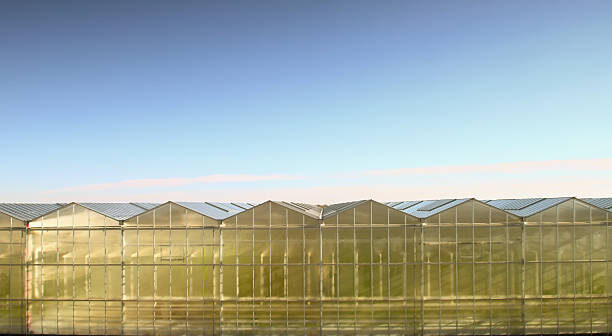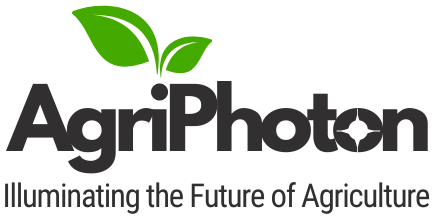Press & Resources
AgriPhoton Press Release & FAQs

PRESS RELEASE
AgriPhoton, a Canadian Innovation Revolutionizing Greenhouse Farming with Semiconductor Quantum Technology
Empowering greenhouse growers with advanced photonic technology to boost yield, cut energy use, and strengthen food security.
Introduction
AgriPhoton Inc., a University of Calgary’s agri-tech spin off, is pioneering a transformative solution for greenhouse farming through semiconductor quantum technology.
AgriPhoton has developed transparent light-converting films that enhance sunlight for plant growth. This photonic innovation helps farmers grow more crops with less energy—cutting costs and supporting Canada’s climate and food security goals.
Developed through collaborative research at the University of Calgary, AgriPhoton’s transparent films harness semiconductor photonic materials to convert sunlight into light more efficiently used by plants. The result? Greater food production, reduced reliance on artificial lighting, and a major step toward Canada’s net-zero and food sovereignty goals.
AgriPhoton Inc. is advancing a Canadian solution that integrates photonic film technology into greenhouses and polytunnels in response to Canada’s urgent climate and food security priorities. This innovation supports the 2030 Emissions Reduction Plan and Canada’s Net-Zero by 2050 goals. Developed in collaboration with leading academic institutions and community partners, this technology is poised to transform sustainable food production through better light management and reduced energy consumption.
Problem Statement
Greenhouse growers across Canada face significant challenges due to energy-intensive operations, light inefficiencies, and seasonal inconsistencies. These constraints limit food production and contribute to carbon emissions. Current solutions like supplemental lighting are costly, resource-intensive, and unsustainable at scale. A key insight came from conversations with both commercial growers and Indigenous food producers who emphasized, “We need sustainable ways to grow locally year-round, without breaking the bank on energy.”
Solution Overview
AgriPhoton is developing scalable, transparent photonic films embedded with silicon-based quantum dots that passively convert underutilized solar radiation into photosynthetically active wavelengths. The films can be retrofitted onto existing greenhouse and polytunnel structures, increasing crop yields by up to 20% and reducing energy use by 25% without the need for supplemental lighting.
What We Learned: Users highly value low-barrier, retrofit-friendly solutions that integrate into their current operations without requiring major infrastructure changes.
Quote (User Insight)
“We’re excited about a solution that makes sunlight work smarter for us—especially one that doesn’t add to our power bill or complicate our workflow.” – Grower from Indigenous agricultural co-op, Saskatchewan
Call to Action
To explore collaboration opportunities, pilot trials, or community deployment of AgriPhoton technology, visit www.agriphoton.com or contact us at [email protected].
FREQUENTLY ASKED QUESTIONS (FAQs)
What is the biggest challenge greenhouse growers face, and how are they dealing with it now?
Poor light-use efficiency, rising energy costs, and unreliable yields due to seasonal variability. Most growers use artificial lighting or shading systems, both of which are costly or inefficient.
Why aren’t existing technologies solving this problem effectively?
LED systems and traditional methods are energy-intensive and expensive, requiring substantial technical and financial investment—barriers that limit adoption in remote or underserved communities.
What concerns do users have about adopting this new technology?
Growers worry about upfront cost, technical complexity, and infrastructure changes. AgriPhoton’s films are designed to be affordable, passive, and easy to install.
What was the most surprising insight discovered through user engagement?
Farmers often view new technologies as complex or high-risk. Their excitement grew once they saw that AgriPhoton’s solution was passive, low-maintenance, and could integrate with their current setup.
What matters most to users when selecting a light-enhancement solution?
Performance, ROI, ease of installation, compatibility with current structures, and resilience across varying weather conditions.
How does AgriPhoton’s approach differ from competitors?
AgriPhoton delivers a passive, energy-free solution using semiconductor quantum technology—no electricity, no moving parts, and fully compatible with existing infrastructure.
Is this solution relevant for Indigenous and remote communities?
Yes. It’s co-developed with Indigenous partners and aligned with Canada’s Indigenous Agriculture and Food Systems Initiative, supporting sustainable food production in remote regions.
What are the long-term benefits of adopting this technology?
Higher yields, lower energy bills, reduced carbon emissions, and a more resilient, locally focused food system.
When will this technology be commercially available?
Field testing is ongoing. Commercial rollout is expected within 18–24 months based on pilot outcomes and feedback.
